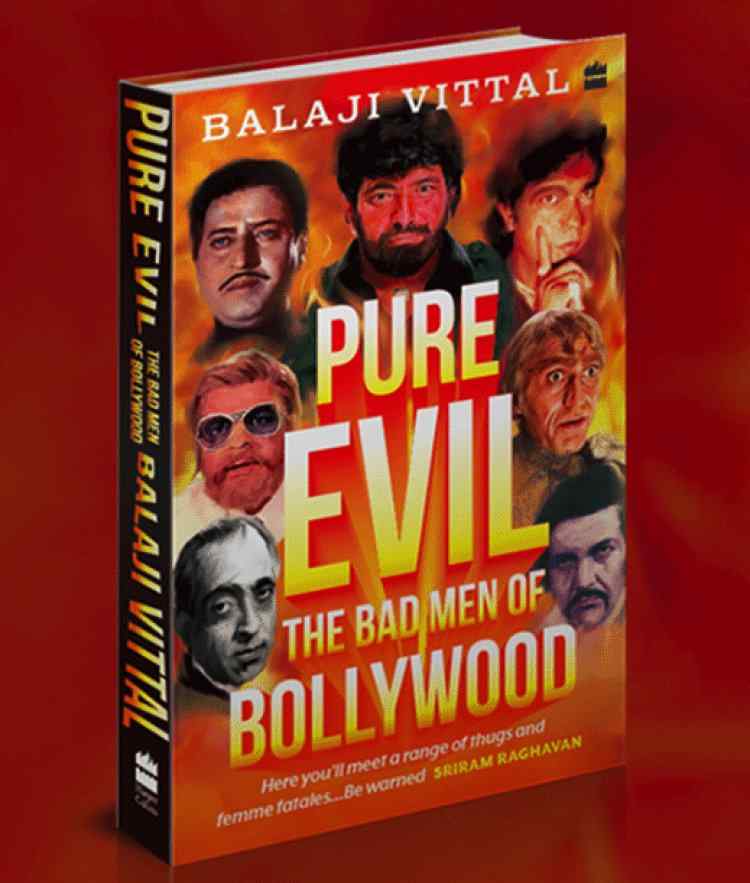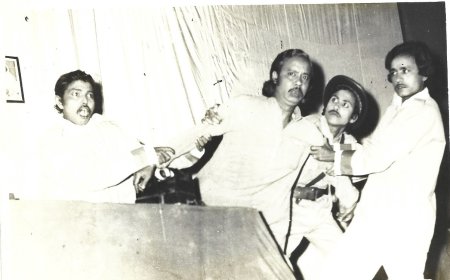Complex nuances of Bollywood's villains

Balaji Vittal writes on complex nuances of Bollywood's villains in his book,
Bollywood has a wide range of antagonists, but they are rarely mentioned in academic or other discourse. Even though they are rarely discussed, an actor's true mettle is shown in his or her depiction of the antagonist, who is often remembered not for his or her evil deeds but for a unique line of dialogue or a specific mannerism. There have been several memorable bad men throughout Indian film history who have left an indelible impression on audiences. Even though they are the bad guys, we find ourselves rooting for them.
Balaji Vittal, who won the National Award for Best Book on Cinema for his collaboration with Anirudha Bhattacharjee on R.D. Burman: The Man, The Music (2011), has written a new book, PURE EVIL: The Bad Men of Bollywood (2021), published by HarperCollins India, in which he takes an in-depth look at the "bad men of Bollywood," uncovering the varying colours of the representations of the villains, which have been unexplored until now.

Author Balaji Vittal
The 307-page book with a foreword by Sriram Raghavan and an introduction is unique for a variety of reasons. The book contains seven sections. The engaging chapter titles seem to be the book's strength and will have the reader hooked from the start. However, rather than jumping right into a depiction of Bollywood's villains, this book delves into the industry's rich history. In the section titled "Angrezi Hukumat: The Colonizer as Enemy," the author describes a scenario in which the British were, in reality, the antagonists (the Censor Board prior to India's independence). Vittal uses V. Shantaram's Swarajyache Toran (Thunder of the Hills) as an example of a film that was difficult to censor and eventually had to have its title changed and several parts cut, most notably the scene in which the flag is raised. Ultimately, he altered the film's name to Udaykaal. After establishing that the "coloniser is the villain," the author delves somewhat deeply into the subject. Shatranj Ki Khilari (The Chess Player) by Satyajit Ray and Lagaan: Once Upon a Time in India by Ashutosh Gowariker are two movies that show how the British are portrayed as bad guys in the second chapter of this book, "Videshi Haath" (2001).
Although the book initially appears to be all about popular villains and their catchphrases (like Gabbar Singh's "Kitne aadmi the" in Sholay or Mogambo's "Mogambo Khush Hua" in Mr. India), the author instead provides a compelling social perspective by citing specific instances of the wrongdoings of gangsters, cunning family members, dishonest police officers, serial killers, and moneylenders. It makes the book more interesting to read, which contributes to the book's overall usefulness as an academic resource. In the book's foreword, filmmaker Sriram Raghavan writes, ‘Balaji’s book is a colourful canvas against which we get to see through the workings of these accursed minds." Raghavan is entirely correct, as the book explores the various facets of the Indian villain that were hitherto neglected and unexplored. However, the reader may be confused by the book's cover, which showcases the popular villains of Indian cinema, and believe that the book exclusively discusses the popular villain. When they read the book, however, they will discover that its substance is quite serious and intellectual, a fresh addition to Indian film writings. The scholarly significance of Balaji's book is what makes it worth reading, besides its readability and interpretation of the numerous shades of villains.
What's Your Reaction?
































































